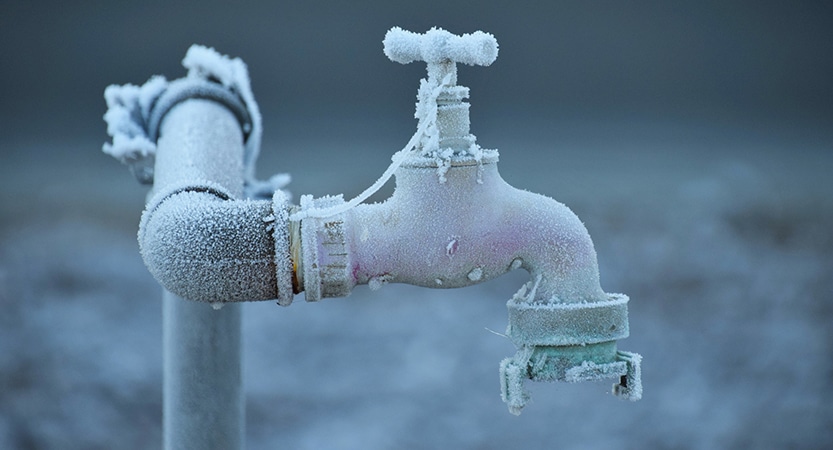Avoiding Frozen Pipes: Effective Strategies for Cold Weather
Avoiding Frozen Pipes: Effective Strategies for Cold Weather
Blog Article
We've come across this post relating to How To Avoid Freezing Pipes down the page on the net and reckoned it made sense to relate it with you on this site.

Cold weather can ruin your pipes, especially by freezing pipelines. Right here's how to stop it from occurring and what to do if it does.
Intro
As temperatures decrease, the risk of icy pipes rises, possibly resulting in costly repair work and water damage. Understanding just how to stop frozen pipelines is crucial for homeowners in cool environments.
Comprehending Frozen Pipelines
What causes pipelines to freeze?
Pipelines freeze when revealed to temperature levels listed below 32 ° F (0 ° C) for prolonged durations. As water inside the pipelines ices up, it broadens, taxing the pipe walls and possibly creating them to burst.
Dangers and problems
Icy pipes can result in water disturbances, residential or commercial property damages, and pricey fixings. Burst pipes can flood homes and trigger substantial architectural damages.
Indicators of Frozen Piping
Identifying frozen pipes early can prevent them from bursting.
How to determine icy pipelines
Try to find reduced water flow from faucets, unusual odors or sounds from pipelines, and noticeable frost on subjected pipes.
Prevention Tips
Insulating susceptible pipelines
Cover pipes in insulation sleeves or use warm tape to secure them from freezing temperatures. Concentrate on pipes in unheated or outside areas of the home.
Heating strategies
Maintain interior rooms appropriately heated up, especially locations with plumbing. Open up cabinet doors to permit cozy air to distribute around pipelines under sinks.
Safeguarding Exterior Plumbing
Yard hose pipes and exterior faucets
Detach and drain pipes garden tubes prior to winter. Set up frost-proof faucets or cover outdoor faucets with shielded caps.
What to Do If Your Pipes Freeze
Immediate actions to take
If you presume icy pipes, keep taps open to eliminate stress as the ice thaws. Use a hairdryer or towels soaked in hot water to thaw pipelines gradually.
Long-Term Solutions
Architectural changes
Consider rerouting pipes far from outside wall surfaces or unheated locations. Include added insulation to attic rooms, cellars, and crawl spaces.
Updating insulation
Purchase high-grade insulation for pipes, attics, and walls. Proper insulation aids keep constant temperatures and decreases the risk of icy pipelines.
Final thought
Stopping frozen pipes calls for positive actions and fast reactions. By understanding the reasons, indications, and preventive measures, home owners can secure their plumbing throughout winter.
5 Ways to Prevent Frozen Pipes
Drain Outdoor Faucets and Disconnect Hoses
First, close the shut-off valve that controls the flow of water in the pipe to your outdoor faucet. Then, head outside to disconnect and drain your hose and open the outdoor faucet to allow the water to completely drain out of the line. Turn off the faucet when done. Finally, head back to the shut-off valve and drain the remaining water inside the pipe into a bucket or container. Additionally, if you have a home irrigation system, you should consider hiring an expert to clear the system of water each year.
Insulate Pipes
One of the best and most cost-effective methods for preventing frozen water pipes is to wrap your pipes with insulation. This is especially important for areas in your home that aren’t exposed to heat, such as an attic. We suggest using foam sleeves, which can typically be found at your local hardware store.
Keep Heat Running at 65
Your pipes are located inside your walls, and the temperature there is much colder than the rest of the house. To prevent your pipes from freezing, The Insurance Information Institute suggests that you keep your home heated to at least 65 degrees, even when traveling. You may want to invest in smart devices that can keep an eye on the temperature in your home while you’re away.
Leave Water Dripping
Moving water — even a small trickle — can prevent ice from forming inside your pipes. When freezing temps are imminent, start a drip of water from all faucets that serve exposed pipes. Leaving a few faucets running will also help relieve pressure inside the pipes and help prevent a rupture if the water inside freezes.
Open Cupboard Doors
Warm your kitchen and bathroom pipes by opening cupboards and vanities. You should also leave your interior doors ajar to help warm air circulate evenly throughout your home.

Do you enjoy reading about 6 Ways to Prevent Frozen Pipes? Put a remark further down. We would be glad to find out your views about this content. We hope that you visit us again soon. If you please set aside a second to distribute this page if you enjoyed it. Thank-you for taking the time to read it.
About Report this page